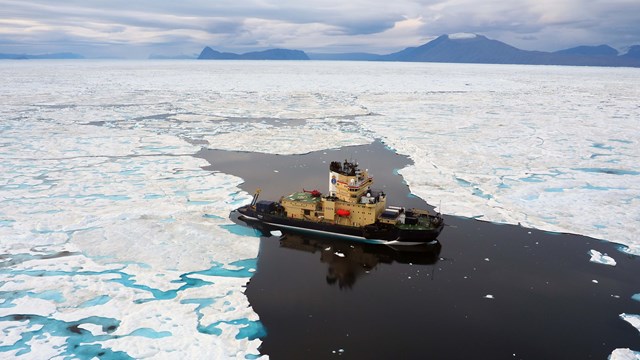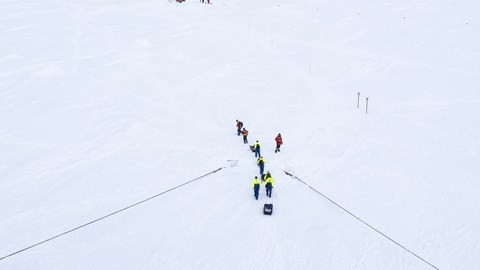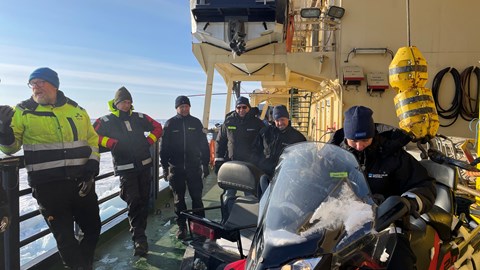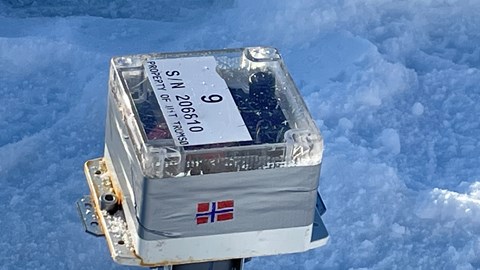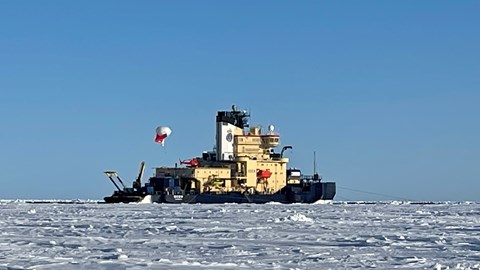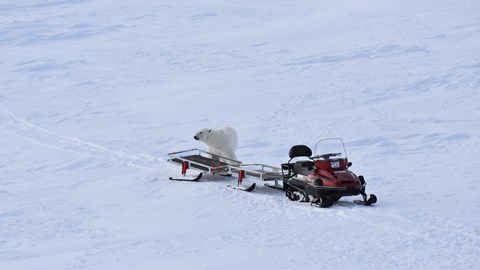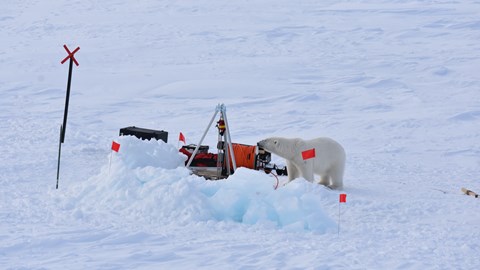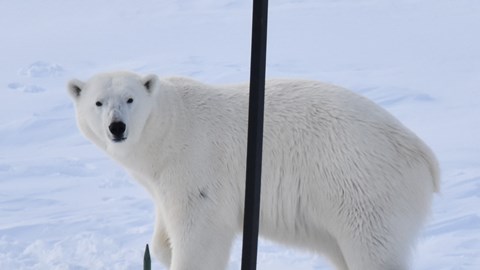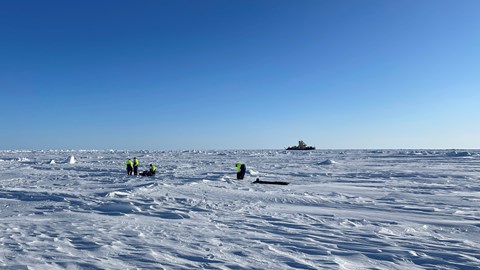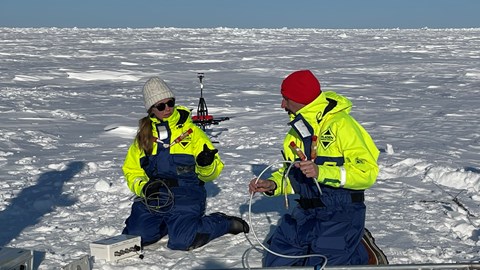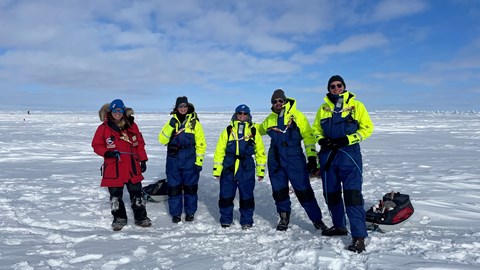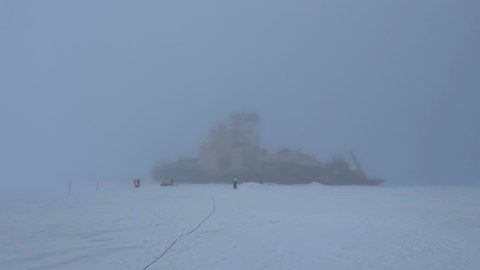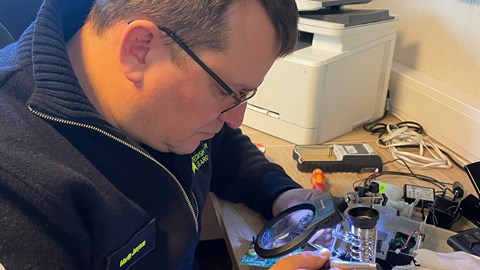Polar bear visited the researchers' ice floe
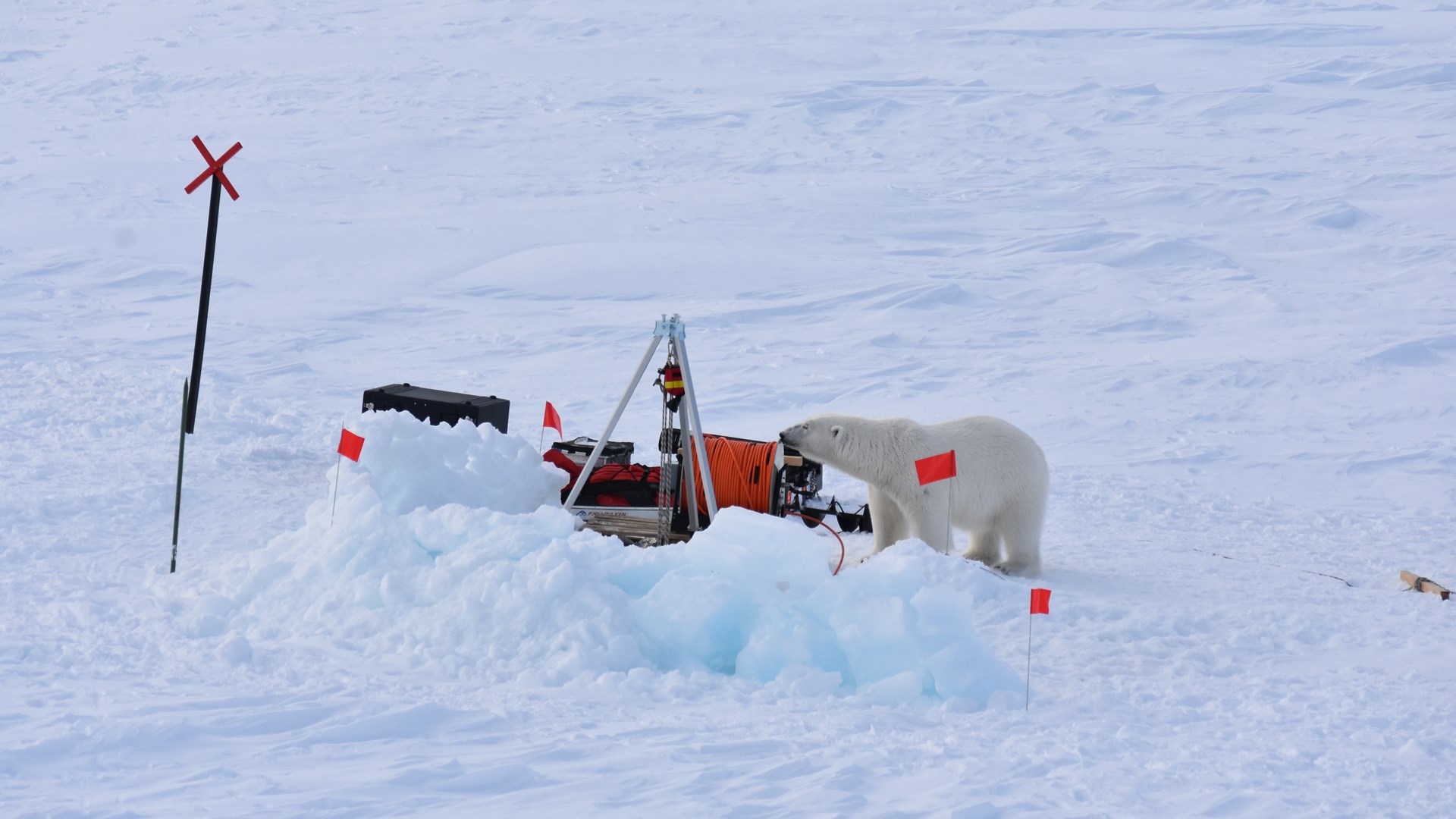 Polar bear examining the scientists' instruments. Photo: Åsa Lindgren.
Polar bear examining the scientists' instruments. Photo: Åsa Lindgren.
Arctic Ocean, 22 May 2023
The first longer ice station started on Tuesday, and it has been intense days on board and on the ice floe. Polar bear guards man each workstation on the ice floe, and an evacuation plan is drawn up with the help of snowmobiles and helicopters.
We have had very tough ice conditions and therefore chose to put the first longer ice station a bit further south while waiting for the really big, tough ice floes to start moving and new roads open to the north. Even the very capable icebreaker Oden has a tough time under these conditions, and we talk a lot on the bridge about what desired characteristics a new research vessel with high icebreaking capacity should have for Swedish polar research to continue to be world-leading. If you want to continue to be able to carry out strategic research, you need an even stronger and heavier ship designed and adapted for research that can get to positions based on the needs of the research.
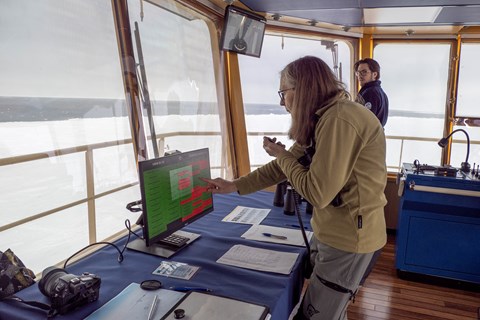
When someone is on the ice floe, the bridge is staffed with polar bear trackers and "ice control". This position is most often staffed by our fantastic doctor Agnetha Folestad who, in addition to scouting polar bears, also keeps track of who is working on the ice.
Norway's national day, 17 May, was celebrated by our Norwegian participant Truls Karlsen from Tromsö University, who set out a drifting buoy with the Norwegian flag. These buoys are left behind and send home data for a long time to come, with the ice floe's position, drift pattern and rotation, as well as several other parameters.
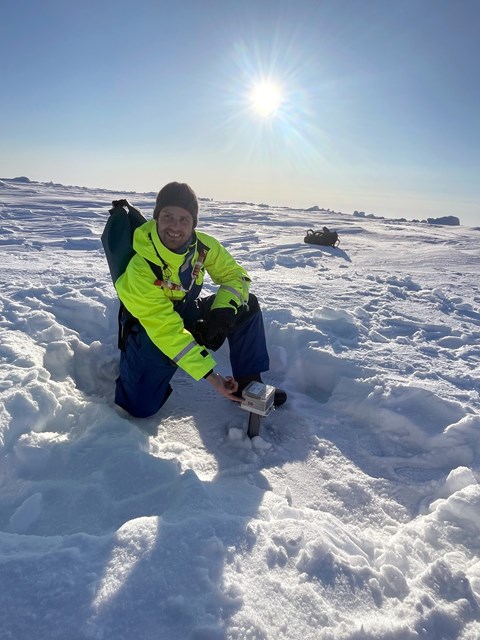
In good visibility conditions, the work proceeds efficiently. Holes are drilled in the ice, instruments are lowered, and ice cores are dragged to Oden to be analyzed in the lab on board. There is also fierce competition for airspace with several drones, helipods and a helikite. The latter is a huge balloon filled with helium that can float high above Oden with sensors and instruments hanging below it.
Poor visibility means it's dangerous to be out on the ice because we can't see if a polar bear is approaching. They have a strange ability to suddenly appear, usually downwind of the ship, probably attracted by our scents. The other day we had a nice bear encounter where a male showed up 5 minutes after everyone got on board after the day's ice work. The bear sniffed all the instruments mounted on the ice, rolled in our footsteps, chewed on some red flags and thought about taking a ride on the snowmobile.
In case of fog, work on the ice is interrupted, and then the time can be used for equipment maintenance, analysis in the lab, or work with data that has been collected.
Text: Åsa Lindgren, Expedition Coordinator

